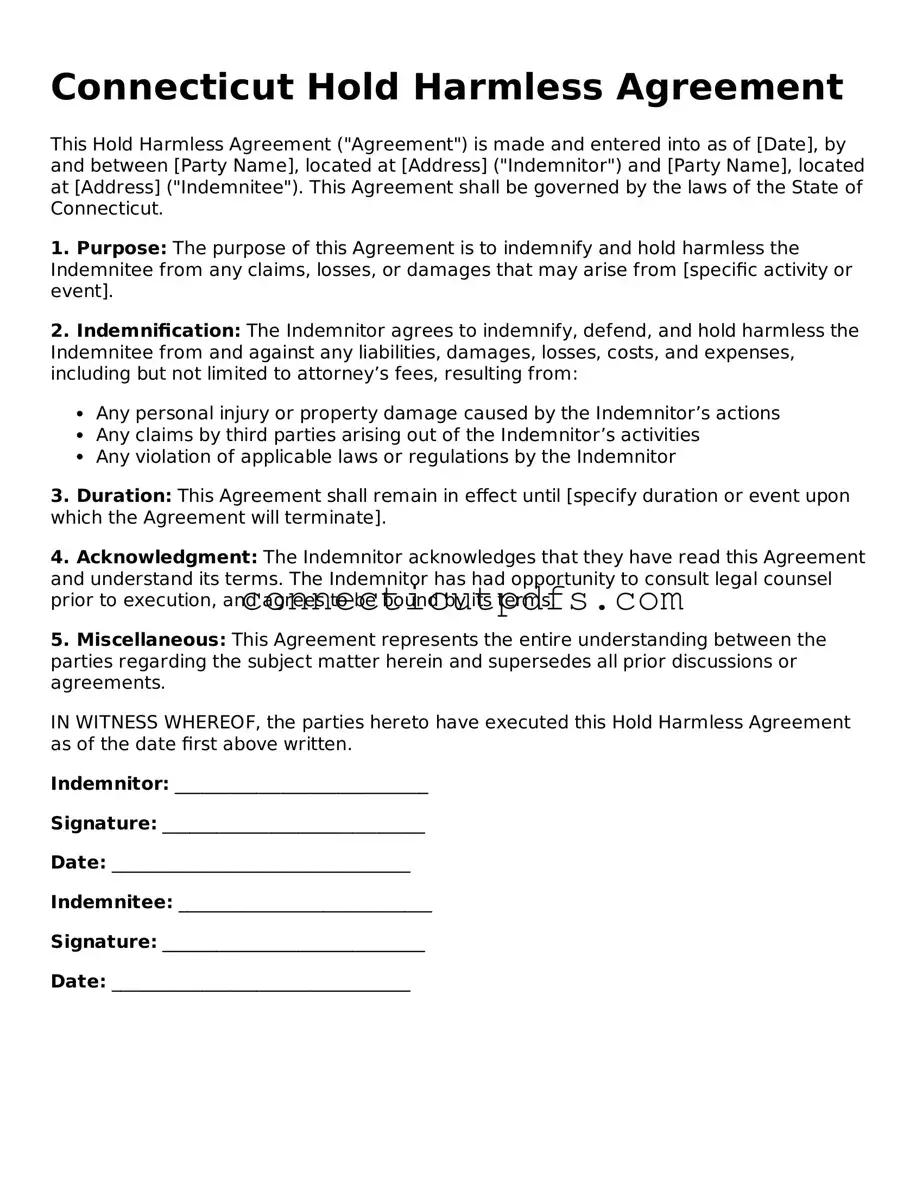What is a Hold Harmless Agreement?
A Hold Harmless Agreement is a legal document in which one party agrees to assume the liability for any damages or losses that may occur during a specific activity or event. This agreement protects the other party from legal claims or financial losses that may arise as a result of the actions of the first party.
Why is a Hold Harmless Agreement important in Connecticut?
In Connecticut, a Hold Harmless Agreement can provide significant protection for individuals and organizations involved in various activities, such as events, construction projects, or rental agreements. By clearly outlining responsibilities and liabilities, it helps prevent disputes and ensures that all parties understand their obligations.
Who typically uses a Hold Harmless Agreement?
Various parties use Hold Harmless Agreements, including property owners, event organizers, contractors, and businesses. For example, a venue owner may require an event organizer to sign such an agreement to protect against potential claims arising from the event.
What should be included in a Hold Harmless Agreement?
A Hold Harmless Agreement should clearly state the parties involved, the scope of the agreement, and the specific activities covered. It should also outline the extent of liability being assumed and any limitations or exclusions. Additionally, it may include provisions for indemnification and insurance requirements.
Is a Hold Harmless Agreement legally binding?
Yes, a properly drafted Hold Harmless Agreement is legally binding in Connecticut, provided it meets the necessary legal requirements. Both parties must voluntarily agree to the terms, and the agreement should be signed and dated to ensure enforceability.
Can a Hold Harmless Agreement be challenged in court?
Yes, a Hold Harmless Agreement can be challenged in court. Courts may invalidate an agreement if it is deemed unconscionable, if there is evidence of coercion, or if the language is ambiguous. It is essential for the agreement to be clear and fair to avoid potential legal disputes.
Do I need a lawyer to draft a Hold Harmless Agreement?
While it is possible to draft a Hold Harmless Agreement without legal assistance, consulting a lawyer is advisable. A legal professional can ensure that the agreement complies with Connecticut laws and adequately protects your interests.
How can I ensure my Hold Harmless Agreement is enforceable?
To ensure enforceability, the agreement should be clear, concise, and free of ambiguous language. Both parties should fully understand the terms before signing. Additionally, including a clause that specifies the governing law can further strengthen the agreement.
Are there any limitations to a Hold Harmless Agreement?
Yes, there are limitations. A Hold Harmless Agreement cannot protect a party from liability resulting from gross negligence or willful misconduct. Courts may also refuse to enforce agreements that violate public policy or statutory regulations.
How do I terminate a Hold Harmless Agreement?
To terminate a Hold Harmless Agreement, both parties must mutually agree to do so. This should be documented in writing, specifying the effective date of termination and any remaining obligations. It is advisable to consult a lawyer to ensure that the termination is executed properly.
